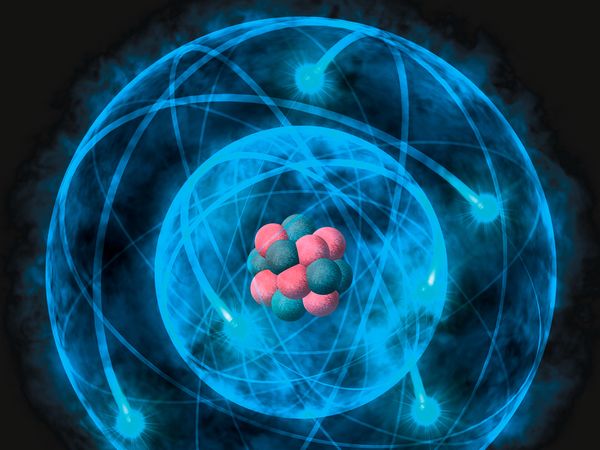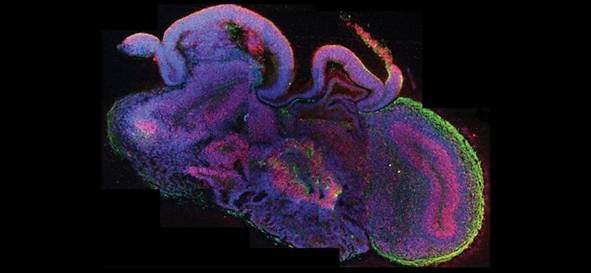Is Matter Consisting of Void? – Answers to Questions

The apparatus used by Rutherford in his discovery of the atomic nucleus. Alpha particles emitted from a radon source inside a lead box strike a gold foil, which scatters in various directions, leaving traces on the surrounding zinc sulfide detector screen.
Is Matter Consisting of Void? After my article, I was asked questions. I wanted to answer them here.
First, let me answer Nazan's question. What were the details of the method used to discover the nucleus of the atom? Since the electron moves close to the speed of light, shouldn't it be visible everywhere on the sphere?
To explain the experiment in detail, I'll quote from the book "Particle Physics - The Adventure of Discovering the Smallest - Sezen Sekmen." I'm not copying and pasting, Nazan; I'm writing from the book myself, so appreciate it.
The essence of the experiment was to obtain an idea of the internal structure of gold atoms by firing probes called alpha particles at thin gold foil and examining their scattering directions. Let's remember that gold is an element, meaning it's made up of a single type of gold atom, not molecules. Alpha particles, as we know them today, are helium atomic nuclei stripped of their electrons. The alpha particles used in this experiment were emitted spontaneously from a radioactive source, the element radon. The radon source was placed in a heavy lead box with a very small hole on the side facing the gold foil. The lead prevented the dry alpha particles from passing through; the particles simply shot out of the hole in the box as a beam, collided with the gold foil, and interacted with the structures within the gold foil, scattering them in the directions dictated by these interactions.
This experimental setup was surrounded by a zinc sulfide screen that emitted light when alpha particles struck it. By observing the light emitted by the screen, the direction in which alpha particles scattered from the gold foil could be determined and their deviation from the straight path could be measured. If the gold foil contained gaps, alpha particles would pass through the foil. If the foil contained hard, rigid structures, alpha particles would strike these structures and be scattered back at large angles. According to Thomson's plum pudding model, the positively charged portion of the atom should be spread throughout the atom. The positively charged portion had mass, but if it were distributed over such a large volume, it must have been low in density. Therefore, when alpha particles were fired at the gold foil, they were expected to penetrate the foil and deflect at very small angles, passing through, much like airplanes easily passing through cloud layers.
But that's not what happened. Yes, most of the alpha particles crossed, deflected only slightly, but about one-eight-thousandth of the alpha particles scattered directly back toward the radon source. Rutherford commented on the result: "It's like firing a 15-inch bullet into a napkin, and it came back at you!" Rutherford then calculated the conditions that would create such a situation and concluded: Most of the atom's mass was concentrated at the center, and everything else was empty space. He called this dense core the nucleus. And this mass, concentrated in the nucleus, had a positive electric charge.
So, Nazan, I remembered electrons, but I misremembered. It turns out it's an ionized helium nucleus, meaning it has no electrons. Therefore, there's no such thing as traveling at the speed of light and scattering everywhere.
Now it's time for Dolunay's questions. I'll copy and paste her questions directly. She asks a lot of questions, but it's good. =).
"So, what causes electrons to exhibit the wave motion they do? Is that what they're made of? And how do we perceive material integrity in a place where everything is empty space? Normally, I feel like my hand would have to pass through objects, or I'd have to be able to see through walls..."
Now, let's first explain why electrons exhibit wave motion. I won't tire myself at all, I'll just paste the definition of wave-particle duality from Wikipedia here. Yes, I'm too lazy =).
“Wave-particle duality, in physics electromagneticwaves at the same time particle and particles (e.g. electrons) also means they have wave properties. In other words, light And article They have both particle and wave properties at the same time; they are neither a wave nor a particle in themselves.
Classically, wave and particle models are two different ways of being that can be imagined. The question of whether light and matter consist of tiny particles or should be viewed as a wave spreading through space has a very old origin. At the end of the 19th century, quantum just before the development of the theory JC Maxwell'of electromagnetic theorylight It offered a very robust wave model for light. At the same time, the discovery of atoms also clarified the idea that matter was composed of tiny particles. Thus, the wave model for light and the particle model for matter were considered valid.
Quantum with the development of the theory of light photon It consists of particles called atom It was discovered that the particles constituting matter also possess wave properties. Thus, it was seen that no single model could be valid for either light or matter. Although beyond human imagination, it was concluded that matter and light possess both particle and wave properties. Wave-particle duality is the name given to this dual nature of matter and light.
In reality, since wave and particle models are mutually exclusive modes of existence, it is impossible for an object to appear simultaneously as both a wave and a particle. Wave-particle duality refers to the fact that matter or light exhibits wave properties under certain conditions and particle properties under other conditions. Whether it appears as a wave or a particle depends on how it is observed. Matter particles appear as particles if an observation reveals their position, and as waves if an observation reveals their momentum (speed).
This dual character of matter is only evident in observations at the atomic level (in the microverse) is emerging.”
I think it was a pretty descriptive quote.
Now, let's get to the second question. I actually meant to explain this in my previous post, but I forgot. I'm glad you asked. If the atom is 99.999 percent empty, why don't we interconnect? This doesn't happen due to electromagnetic laws.
According to electromagnetic laws, two objects with the same electric charge repel each other. Therefore, when an atom encounters another atom, their electrons, having the same charge, repel each other, preventing the atoms from fusing together. This is how the material universe as we know it comes into being. It's that simple.
If you have any questions, please leave a comment. Good evening.









Thank you for your effort and work. Thanks to you, I learned all the experimental details I was wondering about. It means alpha radiation is being emitted. I think the reflected radiation in the representative picture is drawn thin to show less energy. Does this mean that some of the energy passes to the nucleus? If so, is this why radioactive radiation causes death by damaging the structure of living things? Since the mass of an alpha particle is 6.644656x10^-27 kg, how does it pass through the orbitals and wavelengths of electrons? Or are the reflected rays hitting the atom, and the straight rays passing through the gaps between atoms? Maybe there are gaps between atoms in pure elements :P.. Crazy questions in my head :)) I was wondering about your planc distance, area and volume again.… Read more »
Thanks for making me think about the name of the page :)